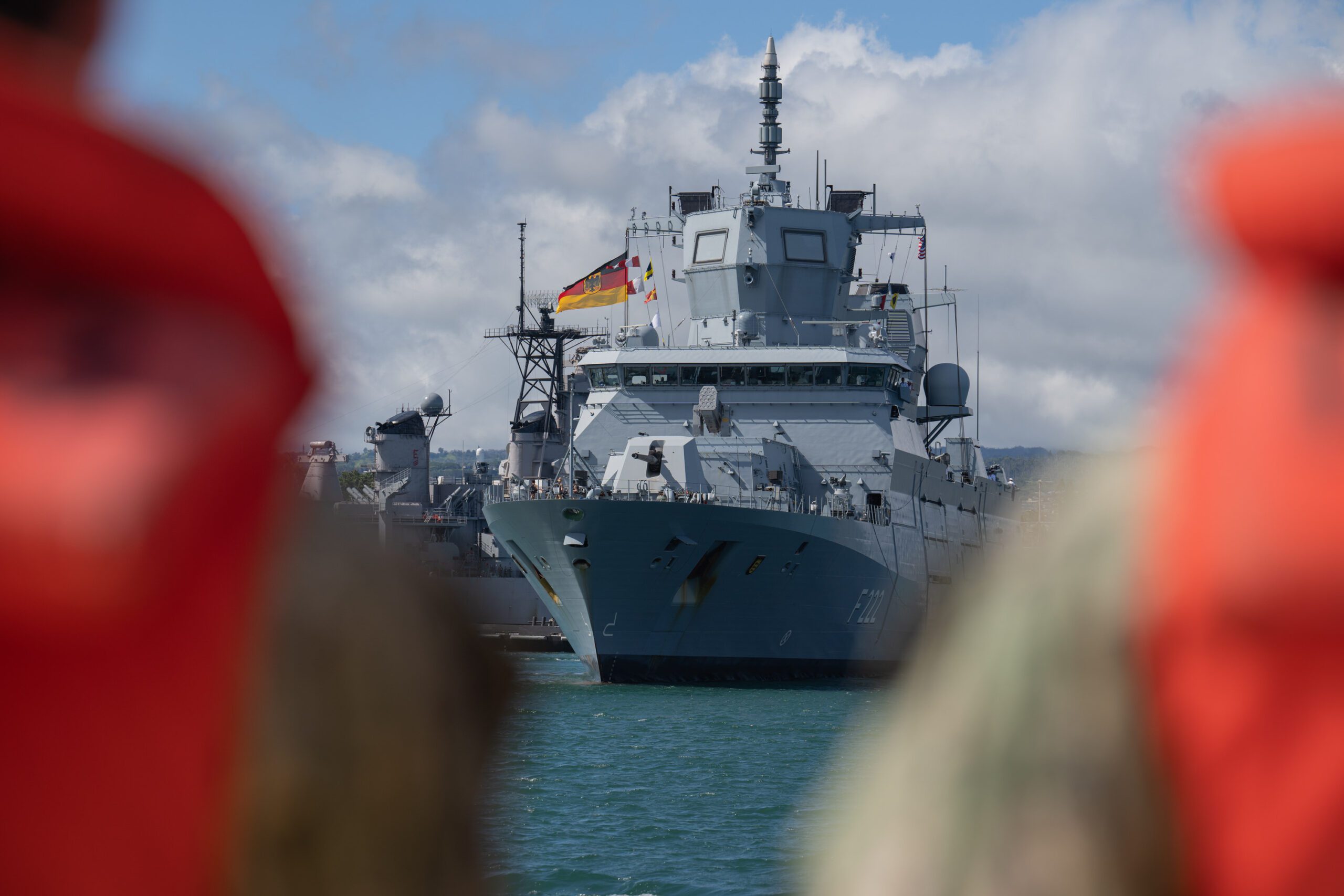Hung Cao – A Navy Diver In The Pentagon Briefing Room
Hung Cao and the Fight to Rebuild America’s Maritime Power Before the Next War Arrives by Captain John Konrad (gCaptain) The first thing you notice about the US Navy’s Undersecretary...

by John Konrad (gCaptain) The Red Sea, one of the world’s busiest and most strategically vital waterways, has become so hazardous that even the German Navy is steering clear. Defense Minister Boris Pistorius’s decision to redirect the frigate Baden-Württemberg and support vessel Frankfurt am Main around the Cape of Good Hope on their return from an Indo-Pacific deployment speaks volumes. The Red Sea is now deemed too perilous, underscoring just how ineffective current U.S. and EU naval protections are in this region.
For months, the U.S. and EU have stationed forces to secure the Red Sea’s shipping lanes. Yet, Houthi rebels, equipped and backed by Iran, continue to harass and attack vessels under the guise of “solidarity” with Palestinian forces in Gaza. Reports reveal Houthi attacks extending into the Indian Ocean and even the Mediterranean, a spread that demonstrates their increased capability and adaptability. The EU’s mission Aspides commander warned of escalating danger but lacked the ships and resources needed to respond adequately. The United States Navy continues to send warships through the Red Sea, but its mission to protect merchant ships—Operation Prosperity Guardian—is considered a failure by several naval experts we interviewed and has significantly diminished in scope and size. As a result, even many US-flagged commercial vessels – which the US Navy is obligated by law to protect – are opting to divert their routes around Africa.
The impact has been devastating. Major shipping lines are rerouting to avoid the Red Sea entirely, disrupting supply chains and escalating transport costs globally. The German decision to bypass the Red Sea – lengthening the journey by thousands of miles – should be a wake up call for the minority of ship owners who are still transiting the red sea.
This situation shines a harsh light on decades of underspending on naval defense among NATO members, particularly in Europe. Faced with maritime challenges from the Indo-Pacific to the Middle East, European nations – not to mention North American ally Canada, which has allowed its navy to shrink to an alarmingly small size – find themselves stretched thin, struggling to deploy warships where they are needed most.
The failure to invest in robust maritime forces, and preference to spend small defense budgets on Army capabilities, has left Western navies with insufficient resources to counter even minor threats like the Houthis effectively.
With geopolitical tensions escalating and traditional maritime routes becoming war zones, this re-routing marks a turning point. Unless NATO allies begin addressing these gaps by investing in naval assets, modern maritime strategies, and systems aboard merchant ships capable of defending against drones and missiles the future of secure global shipping lanes remains in question.
The broader question is even more stark: If NATO cannot send warships to face the Houthis, how will it possibly survive in a war against a larger adversary like China?

Sign up for gCaptain’s newsletter and never miss an update

Subscribe to gCaptain Daily and stay informed with the latest global maritime and offshore news
Essential news coupled with the finest maritime content sourced from across the globe.
Sign Up